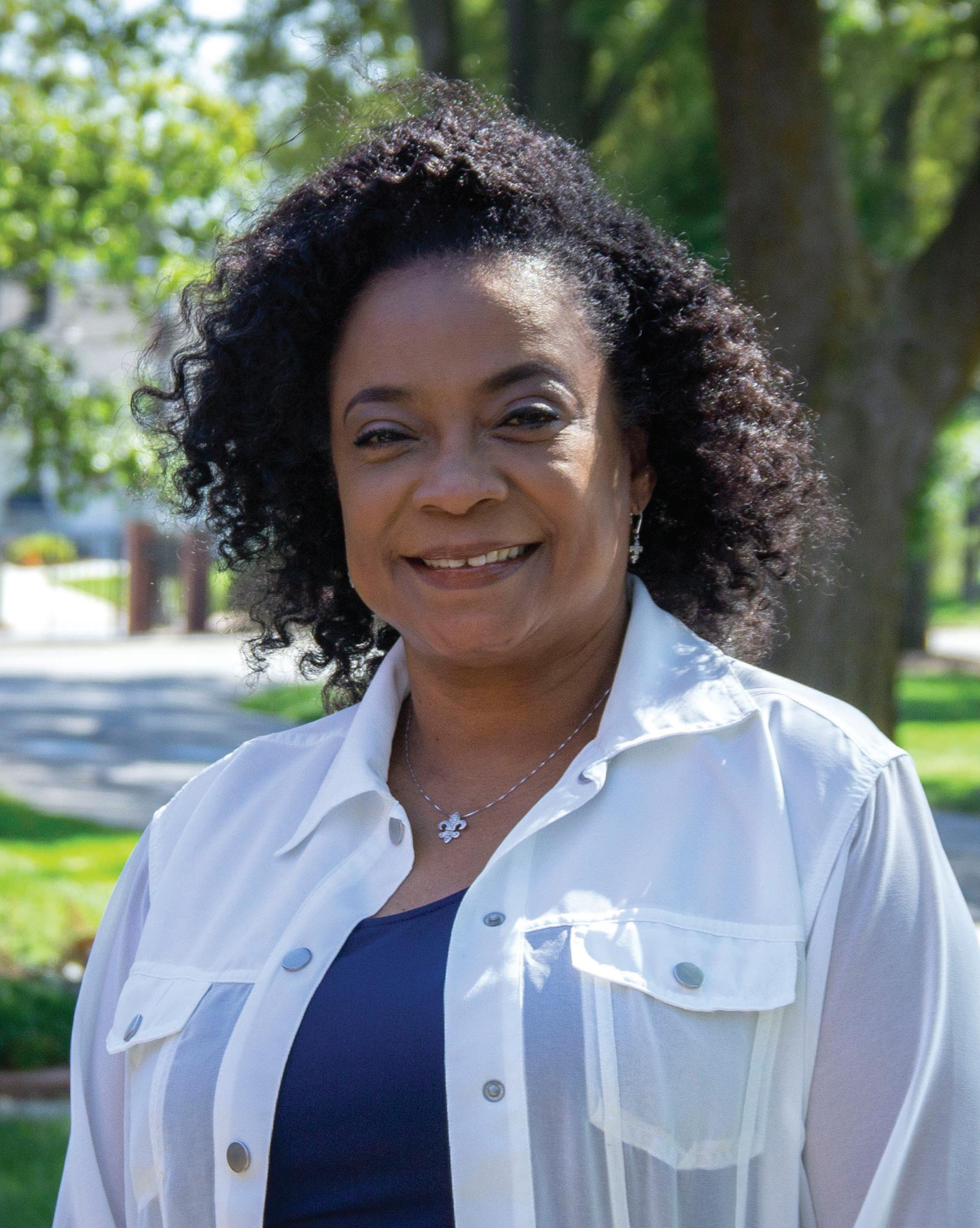7 minute read
A passion developed
A PASSION
DEVELOPED


MCC Photography graduate enjoys fulfilling teaching career, worldwide travel
As a teenager, professional photographer Al Wildey loved the arts.
“I was a pretty good student, but I really enjoyed art classes. In the art classes, I painted, drew, sculpted. A friend of mine and I painted murals,” he says. The only medium Wildey wasn’t crazy about was, ironically, photography. “I did everything except for photography,” he explains. “I had a friend on the yearbook staff who took me into the dark room. I smelled all the chemicals. There was running water and I thought, ‘No this is not what I want to do.’” After graduation, Wildey left his home in Michigan and enlisted in the United States Air Force. During basic training, he missed being creative. After getting one of his first checks, he went and bought something unexpected: a camera.

Wildey was initially stationed in London, where he was able to take photos and develop them in a dark room there. His passion for photography grew exponentially. Later, he was stationed at Offutt Air Force Base in Bellevue, Nebraska. While living in the Omaha area, he learned about a Commercial Photography program at Metropolitan Community College. Wildey enrolled in classes in 1980. His photography courses were at the then-brand new Elkhorn Valley Campus. “It changed my world because I didn’t go to college right out of high school. I was able to go to school with a lot of nontraditional students. It made for such a great experience,” Wildey says. “I met so many great people.” While the program focused on commercial photography, Wildey says the instructors taught students how to balance commercial and artistic photography. What he learned from his MCC teachers was influential in the rest of his career.

“[Instructor] Jim Butkus comes from a fine art background, and him allowing for that sort of mix and hybrid of concept and application, it was really, really important for me.” Another instructor, Tom Langdon, helped Wildey look at photography in a deeper way.


“He said ‘Go out and photograph truth.’ We looked at each other and were like ‘What are you talking about?’ My truth at that time was from active duty military to my adult civilian life. I figured out that while I was driving, there are mirrors in front and behind me.”
Wildey bought a full-length mirror and placed it in the middle of a road. He photographed himself in the mirror with the road in the background, but also ahead of him. “I showed Tom and he said, ‘You nailed it.’ It was just a seminal moment for me.”
After graduating in 1982, Wildey was 23, single and ready to head to a coastal city and begin working. He decided warm weather sounded better, so Wildey packed up his car and began driving to California. He made some stops along the way to visit friends and even got his first job in the photography world. “I stopped in Cheyenne, Wyoming. One of my friends asked ‘Why don’t you hang out here for a while?’ I ended up staying for 10 months. While I was there, a photo lab opened in a shopping mall. It was the first one-hour photo in the state of Wyoming.” In 1983, Wildey made it to Los Angeles. He was able to obtain a job at a one-hour photo lab within his first few hours in the city. Over the next three years, he was also able to do all kinds of photography work, fine tuning his personal style of street photography mixed with landscape photography. “I did a lot of freelance work and commercial work. I photographed the 1984 Summer Olympics. I met a lot of interesting people and I was enjoying life out there.” A family emergency brought Wildey back to Michigan in 1985. While looking for a new job, he saw a listing for a photographer at Michigan Tech University. “I accepted a job as a manager of the photo services department.
We provided all photo support having to do with the university from sports to PR to science. I had a great experience there. Being able to apply the commercial and administration stuff of my experience.” It was Wildey’s first time working in the collegiate world. He loved being able to work with students and teach them how to become better photographers. “I thought ‘I really enjoy teaching people at this level,’” Wildey says. Wildey decided that he wanted to realize his dream of teaching college students.

For me, one of the foundational ideas about photography is that while it is so good at recording surface, descriptive info, it is always symbolic. It’s at its strongest when we use it to tell stories.

With the support of his wife, he enrolled in a Bachelor’s in Fine Arts program at the Rochester Institute of Technology in New York. After graduating, he found a photographer job at the University of Idaho. The college was able to accommodate and allow him to work and enroll in a Master’s program, graduating in 1996. After working his way up to being a full-time tenured instructor at the University of Idaho, Wildey returned to Michigan in 2003 to be closer to family. Wildey took a tenured position at Central Michigan University, where he retired from in August. While teaching, Wildey says he applied what MCC instructors taught him while he was a student, including what Langdon taught him when he took that photograph of his truth.
“I showed that photo to classes for years and years. It wasn’t about camera operation or chemicals. It was about expressing an idea that could only be done symbolically. For me, one of the really foundational ideas about photography is that while it is so good at recording surface and descriptive info, it is always symbolic. It’s at its strongest when we use it to tell stories.”
On top of teaching, over the years, Wildey was able to travel, photograph the world and show his work in galleries on several continents and cities, including Paris, Prague, Chicago, Los Angeles, New York City and his hometown of Grand Rapids, Michigan. “I exhibited in the Grand Rapids Art Museum. They put it in the permanent collection. As a kid from a working-class family, a lot of family didn’t understand what I was doing. Art, to them, was pictures of pheasants or deer in the living room. To have family come see my work as part of the permanent collection was really cool,” Wildey says. Now that he is retired, Wildey is still busy. He is working on a photography app for smart phones and is writing a book on how to become a better photographer. “I’m writing the book I wish I had when I was teaching introductory photography. It’s based upon the teaching I’ve done,” he says. “The foundation of my book is that you are going to be a good photographer by unlearning the bad habits you already have. The way to get better is to stop doing what you’ve been doing. Let’s take a step back and look at what makes a really good photograph.” Wildey was grateful to spend more than three decades working in the collegiate world. Although he is retired now and has moved to Florida, he is still teaching an online course and stays in touch with students from over the years. “I know that the relationships that I established at MCC laid the groundwork for everything that came after. I managed to spend about 35 years in higher education and have loved every minute of it,” he says. “I have been honored to be a part of so many students’ lives.”

To learn more about Al Wildey and see more of his photography, visit alwildey.com.









